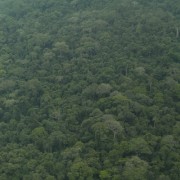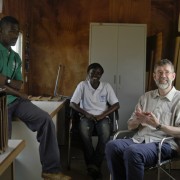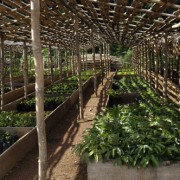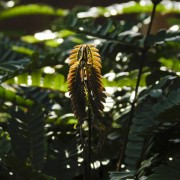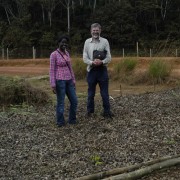The Chaillu Massif, Congo
After the Amazon, the Congo Basin is the largest remaining expanse of tropical wilderness in the world. It is also one of the most threatened. We are working to combat slash and burn farming in the Chailllu Massif in Congo (Brazzavile).
Our work at the Inga Foundation is based on Inga Alley Cropping, a scientifically-proven agroforestry technique that provides farmers with a viable, sustainable alternative to slash-and-burn farming.
As there are no Inga species native to the Congo, our goal there is to identify local species that can play the same role for us in the Congo Basin as Inga does in Central and South America. This is essential as, however good our intentions were, it would be irresponsible to introduce Inga as an exotic.
We are collaborating with the African Legume Group of the Kew Botanic Gardens in our search for a Congolese ‘Inga’. Once identified, the hope is that the species will function across Central Africa, giving us the opportunity to expand our work across the region.
- The Congo Basin is the 2nd largest remaining expanse of tropical wilderness in the world. However the area is increasingly threatened by a raft of issues, including pressure from slash and burn agriculture.
- Dr Martin Cheek of Kew Gardens along with the Congolese Botanists overseeing the project in Congo.
- One of the key characteristics that helps identify Inga species and others from the same family is the presence of nectaries at the base of the leaves. And here, on one of our candidate species in Congo, we can see this same characteristic feature, with ants busy feeding off the nectaries on this young seedling.
- Young seedlings of one of the shortlisted species which we will be trialing to determine which will make the best ‘African Inga’
In Congo we are working with MPD Congo, an iron-ore mining company, who is seeking to lessen the expected impact to the rainforest of potentially thousands of families moving into the area looking for work once their mining operation gets underway. As we identify an appropriate tree species, we will be able to work to support these families to develop secure and sustainable livelihoods using alley cropping and thereby protect the area’s rainforest from the damaging impact this huge influx of families could otherwise have.
The combined expertise of our Director Mike Hands, Dr. Martin Cheek of Kew and Congolese botanist Teva Kami enabled us to compile a list of 21 potential tree species. This has now been narrowed down to leave 9 very promising candidates.
MPD has constructed a tree nursery capable of holding several hundred thousand seedlings with trials to investigate how each of these shortlisted species will perform in an alley cropping system. We have mulch trials in progress to test which of the candidate species are able to match Inga’s impressive weed-suppressing abilities. These trials will allow us to put each candidate species to the test in order to select the very best species for the job.
We feel this project has huge potential and are excited to see how it develops.

